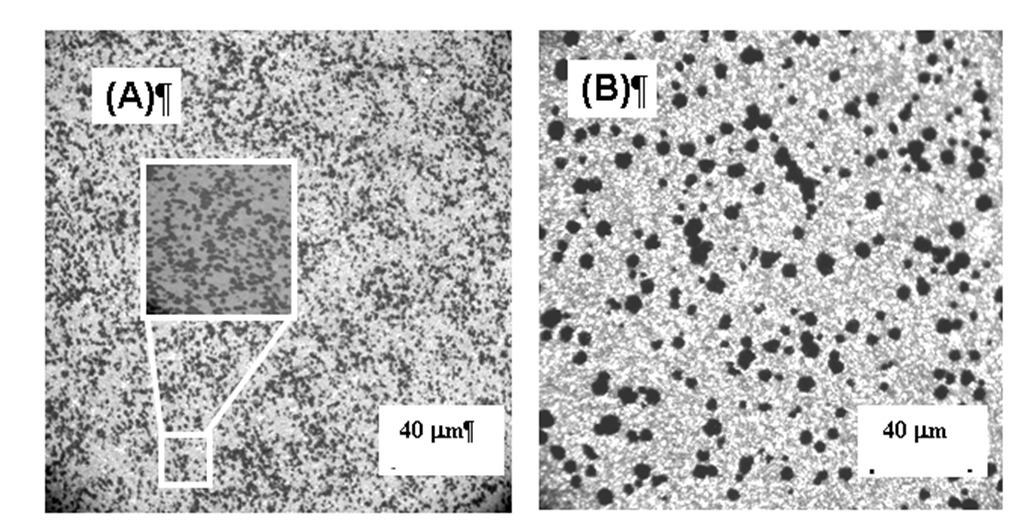Chiral Materials and Unconventional Superconductivity Group
Nucleation Efficiency of Industrial Oxide Buffers
Industrial oxide buffers, now used as template for 2G wires, tend to have low nucleation efficiency, i.e. they have density of nucleation sites lower that single-crystal substrate. This results in granularity of the YBCO layer and low performance. The goal of the project is to understand mechanism of the nucleation and find ways to improve the nucleation efficiency.

Optical micrographs of 0.2 micron thick partially processed YBCO films on (A) SrTiO3 and (B) a buffered metallic tape showing a very large difference in the densities of the nuclei depending on the types of the substrates. Inset in (A) is zoomed in by 2 x to show small nuclei on SrTiO3. YBCO nuclei are dark circles and the light background area is the unreacted precursor. The specimens were heated for 5 min. at T = 740 oC in a flowing gas mixture of p(H2O) = 70 Torr, p(O2) = 100 mTorr, and the balance, N2 from [1].
References
- Superconductor Science and Technology, vol. 18 (2005), pp. 239-248, “Nucleation of YBa2Cu3O7-x on buffered metallic substrates in thick precursor films made by the BaF2 process”, Vyacheslav F Solovyov, Harold Wiesmann, and Masaki Suenaga.




